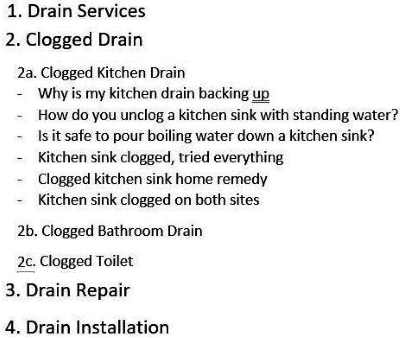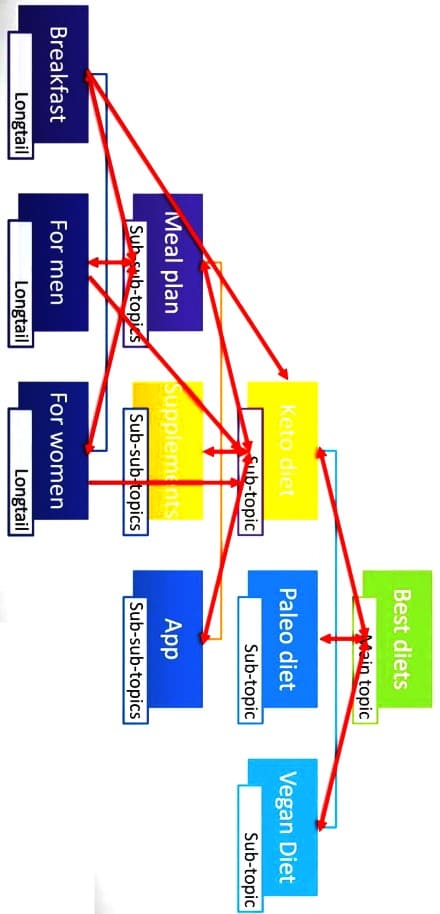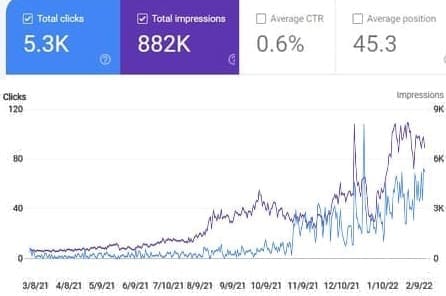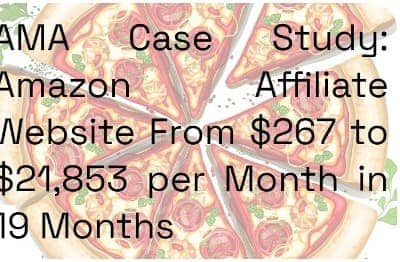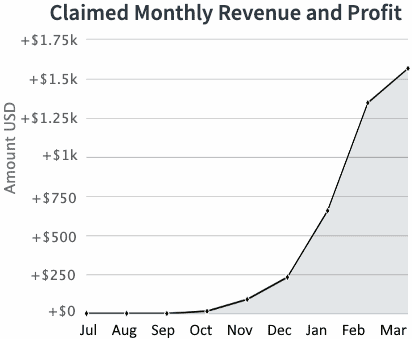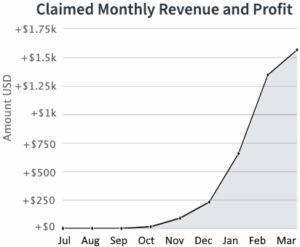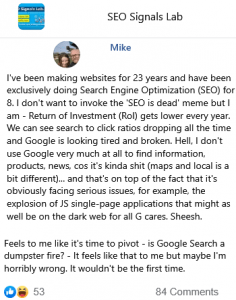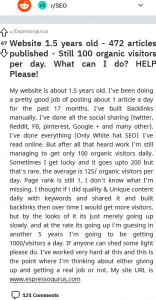JUST A QUICK CASE STUDY FOLLOW UP ON MY REVERSE CONTENT CLUSTERING POST (can be found with a search in this group):
Site: www.XXXXXPestControl.com
*Brand Name has been obscured to protect client rankings
SERVICES SOLD FROM CONTENT PAGE(s) = Pest Control
SITE AGE AT TIME OF CONTENT PUBLICATION = 6 Months (Only 106 visitors per month before we took over)
OTHER: 14 Local Service Pages Ordered for Specific Types of Pests (over 4 months) + Optimization
FROM OUR CONTENT WRITING WORK:
Sales/yr. = 672 ($110,880)
Average Gross/Sale = $165
Client ROI = 2,956%
Content Cost = $3750
OVERALL STRATEGY:
Level-Up Like Mario
Focus: Low competition (low – med volume) keywords leveraged to power-up med-to-high competition pages FAST and AFFORDABLY
Approach: Optimize for user intent / solving problems
Focus your efforts on user intent. This is important. These keywords have low volume because they are ‘extra-long tail' and/or highly specific to a certain query that isn't used as frequently.
THE REVERSE CLUSTER
Traditionally we are taught to start with a BIG power-page (pillar page) covering the core topic in depth and attempting to produce a ‘better' page than those already ranking.
Although this method can yield results, it is a longer path to success, and one that often requires investing in significant off-page Search Engine Optimization (SEO) (i.e. backlinks) to outrank the competition.
In contrast, the "Reverse Cluster" involves creating several pages, each targeting a low competition (but related) keyword/phrase.
Once these pages begin to rank and drive traffic, you would then create a page related to the overall theme/niche topic of the low competition pages. The keyword used for this page would be the next level up in difficulty (i.e. a medium difficulty keyword). Your initial set of pages would then link to your new medium-difficulty page to "Power" it up and rank it faster.
Similarly, once you have multiple clusters made (low competition pages ranked and pointing to medium-competition pages that now also rank) you would point the medium competition keyword pages at a NEW page focusing on a keyword of even greater difficulty.
You repeat this process, powering up increasingly difficult pages on a schedule.
The reverse cluster approach is designed to:
Tackle low competition keywords that require little to no linking to rank
Earn laser-focused traffic that converts and engages with your pagE
Quickly establish a flow of organic traffic that builds exponentially over time
Rank a set of pages that can be used to POWER UP medium competition pages
Leverage the now-ranked medium comp. pages to rank HIGH comp. pages
Need more info about the 'reverse cluster'? Search for my previous post and discussion answers.
It's the process our content agency uses for clients.
53 👍🏽5534 💬🗨
📰👈
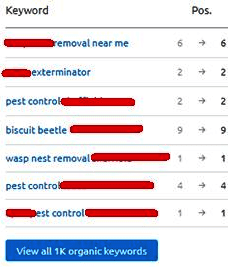

I use the same process, you have to educate the client to be patient while you start on the longtail phrases. I just posted about my example this morning on this group, where I rank the longtail eCommerce phrases using product tags and attributes, to help build relevance and rapid rankings.
Nice, love it!
We find that we can often leverage content in this way to reduce the need for expensive links that are often out of budget for smaller clients.
Similarly, sites that have a budget with authority benefit greatly from internal linking.
Edward
Love your message but…Any reason why not just deploy the pillar page and supporting cluster pages at the same time already all linked up understanding the ranking will happen precisely as you have explained anyways. Why wait?
Good question,
I'll reiterate the intent behind the process below, but in large part its due to budget.
We do introduce lower tier pillar pages early on, and core pages of course exist.
But a core page for, say 'weight loss' isn't going to get ANY traction that early on, so while that page might exist, it wouldn't make a ton of sense to 'power it up' with lower tier pages that also don't have much weight yet.
This is a progressive plan engineered to ensure link equity is laser-focused and not diluted, creating a snowball-like effect once it gets heated up.
For those who belive in Click Through Rate (CTR) and user engagement on site + traffic playing a role in Search Engine Optimization (SEO), this also satisfies that strategy as well.
The reverse cluster approach is designed to:
Tackle low competition keywords that require little to no linking to rank
Earn laser-focused traffic that converts and engages with your page
Quickly establish a flow of organic traffic that builds exponentially over time
Rank a set of pages that can be used to POWER UP medium competition pages
Leverage the now-ranked medium comp. pages to rank HIGH comp. pages
Edward » Jesse Neubert
Thanks
Jesse Neubert ✍️ 🎓 » Edward
Np, its really just about building momentum and results/small wins as fast as possible.
Garrett » Jesse Neubert
Hey Jesse great post, we do the way you mentioned with starting with a big power page then create the supporting pages. We don't put the supporting pages out at the same time like Edward mentioned but roll them out gradually. I'm not apart of the pricing or sales, so I'm just trying to understand if budget wasn't an issue would you still use this method? Or does it really matter? Apologies if I missed something on this already answered.
Jesse Neubert ✍️ 🎓 » Garrett
I always create the pillar pages and have the plan mapped out. Getting age, especially on those higher competition pages is a good thing.
But along with that…
In a lot of cases, I don't feel like the traditional top-down silo or clustering approach maximizes the initially (minimal) link equity, OR spreads it TOO THIN early on.
While not appropriate for all cases, this sometimes manifests as slower overall results across all pages, vs faster results with smaller/lower comp pages.
This method is fluid and can be modelled to fit any goal, budget or timeline.
That said, it certainly has a greater appeal when the client's budget is lower, are in a highly competitive niche where links are costly or difficult to obtain, or when they expect to see results early on.
This strategy helps you establish trust, small(er) and progressive wins that can be used to justify increased spending etc.
In the end there's no one way to do Search Engine Optimization (SEO), and a hybrid approach is something we tackle often, especially with sites that already have content architecture in place.
Happy SEOing!
Garrett » Jesse Neubert
Thank you for the response and the great info. Look forward to seeing more of your posts!
💟1
📰👈
Nathan
Great info Jesse Neubert! Can you give an example or two of a keyword cluster for a local business? Not your clients. Any examples would be helpful
low competition
medium difficulty keyword
Hard to rank keyword
Sure thing. I'd prob add GEO modifiers to these but here is a quick and easy one.
Drawing these out visually is a bit of a pain so you're gonna have to deal with just text here. Or buy the guide lol…although a lot of the info is being posted here for free, just disorganized.
1. Drain Services (core service)
2. Clogged Drain (a 2nd tier pillar page linked to core service #1)
2a-2c are linked to each other as their own separate cluster., and used to power up #2 (clogged drain)
Titles under 2a are representative of the type of content under each smaller pillar page (i.e. clogged kitchen drain), and form their own cluster with #2 in the middle.
📰👈
Chris
these are separate topics and linking to each other?
Jesse Neubert ✍️ 🎓 » Chris
It's a pain to draw these out but here is a generic clustering image that shows one of a few ways these can be built.
I have a guide if you are interested in some tactical methodologies to combine this with some badass keyword research.
You can also search SEO Signals Lab for my first post on this topic and read through my answers on that for a bunch of insight.
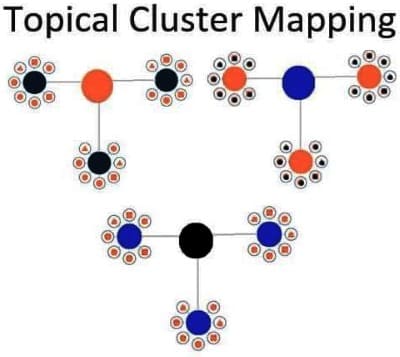
Lucian » Jesse Neubert
Curious what are your thoughts on adding geo modifiers for 2a and 2b in your example? Eg clogged kitchen drain service in Chicago.
Oh and if you do, have you seen any capitalisation issues with this approach? For example once you're done with completing the clusters id not be surprised if the top toer pages tea over the smaller pages.
Jesse Neubert ✍️ 🎓 » Lucian
Yes, but it usually just ends up being additional real estate on the same page when that happens.
As long as search intent is matched correctly and you have good CTA's with a strong offer, I don't see it being a problem.
Lucian
To confirm the client grew ~3000% in 4 months? Which would put them in multiple 7figures? Am I missing something?
3000% of $3750 is $110k. Nowhere near 7 figures. A great number and fantastic ROI, but your math is off.
Jesse Neubert ✍️ 🎓
I'll break it down a bit simpler…
The cost of content was $3750.
A 100% ROI would be $3750
A 1000% ROI would be $37,750 (or 10x 100%)
This content generated 672 sales = $110,880 revenue
See where I'm headed?
2,956% x $3750 is 29.56 x $3750 = $110,880
I'm no math genius by any means, but that's where those figures came from.
It's actually going to be a lot higher over a 2-3 year period due to residual phone calls from happy clients.
TLDR; front end revenue was increased by $110,880
Lucian » Jesse Neubert
Oh ok I see it now. I was thinking that the client makes 100k and the growth was 3000% lol. But yes it makes total sense from the ROI perspective which I missed.
Great work and I'm not trying to give you hard time but I'm trying to figure out the numbers. When I try to establish the ROI I find it difficult to attribute the ROI to one single thing, in this example the content.
You said that the content was $3750. Does this also includes the publishing, strategy, link building and all of your consulting fees? Is the client also paying for Ads, Radio, Social media or other marketing initiatives? Do they have an existing brand they were able to leverage?
P.S If you read Tim Hafford – How To Make The World Add Up, you'd probably ask the same questions 😅
Jesse Neubert ✍️ 🎓 » Lucian
In some cases you'll have the data, in others you won't.
If you have access to the site, simple Google Goals tracking in the backend and UTM parameters in links, etc. can be easily used to understand the customer's journey from a page you wrote and ranked, all the way to the eventual sale/conversion.
Sometimes we have this down to the nitty-gritty, in others we just take averages or average the lead to conversion to revenue based on the data we do know.
Worst case, you can estimate by asking the client about the increase in revenue, leads, etc. since you started presuming no other marketing was done.
If they made $106,000 extra since you started, and no other work was done…largely that can be attributed to your work. Its not perfect but I don't see a need to justify down to the actual individual dollar in most cases (unless its a literal pay for performance setup…which I actually like BTW).
As for the costs for this client, they were inclusive and covered everything. The client was not running ads or doing other marketing.
The client was getting about 106 visitors per month prior, and the site was 6 months old at that point.
To your point though, we whitelabel work for a TON of agencies and as such we don't often have access to that backend data. So we can only go off of traffic stats, averages, Pay Per Click (PPC) value of the traffic, average lead conversion rates for that client + average ticket price or Lifetime Value (LTV), and so on.
Have a great weekend man 🙂
Lucian » Jesse Neubert
Thanks for the clarification and sounds like a great ROI for the client. Have a great weekend as well!
📰👈


